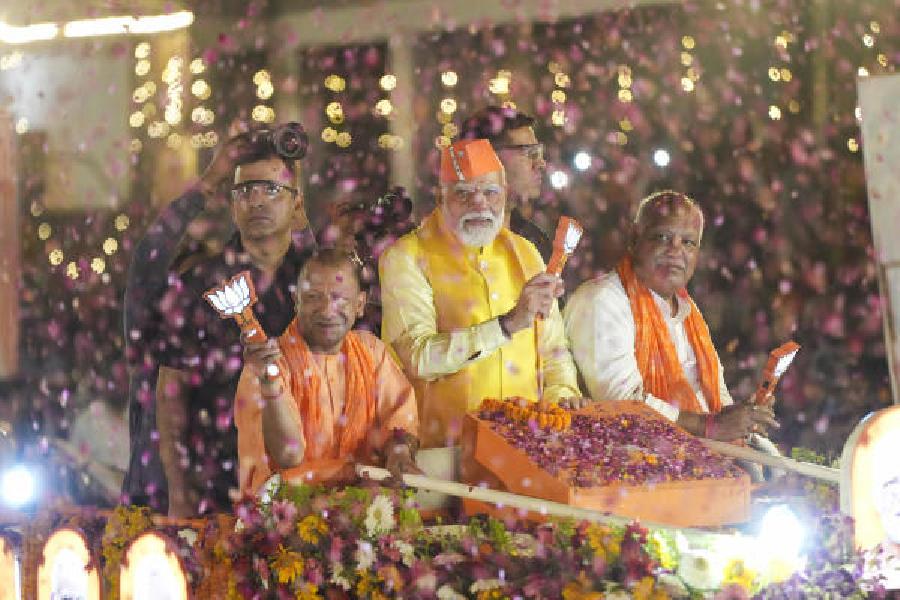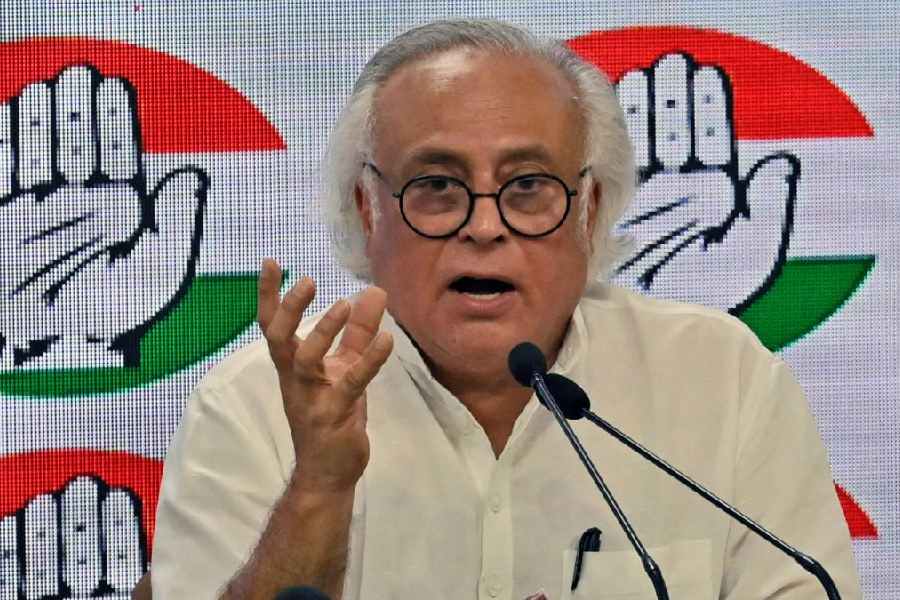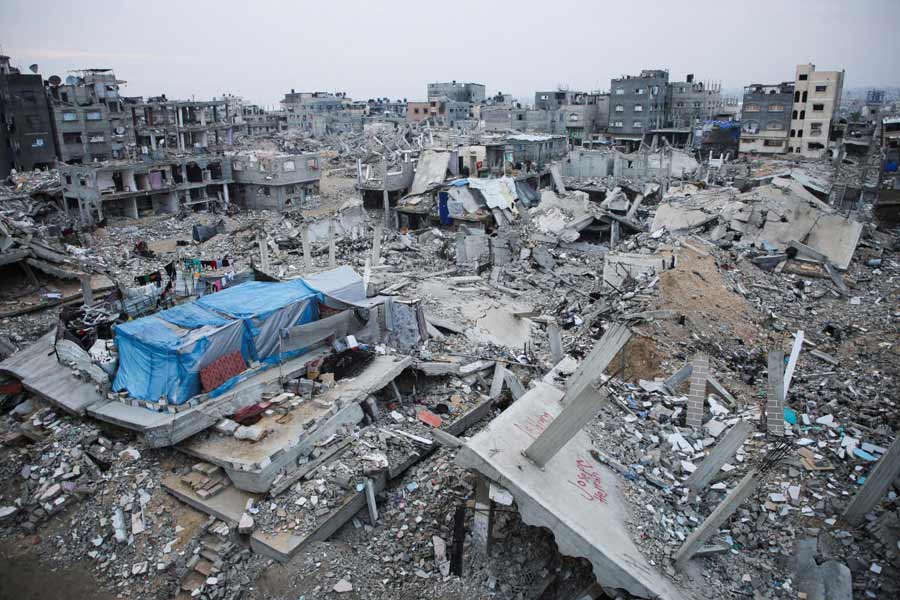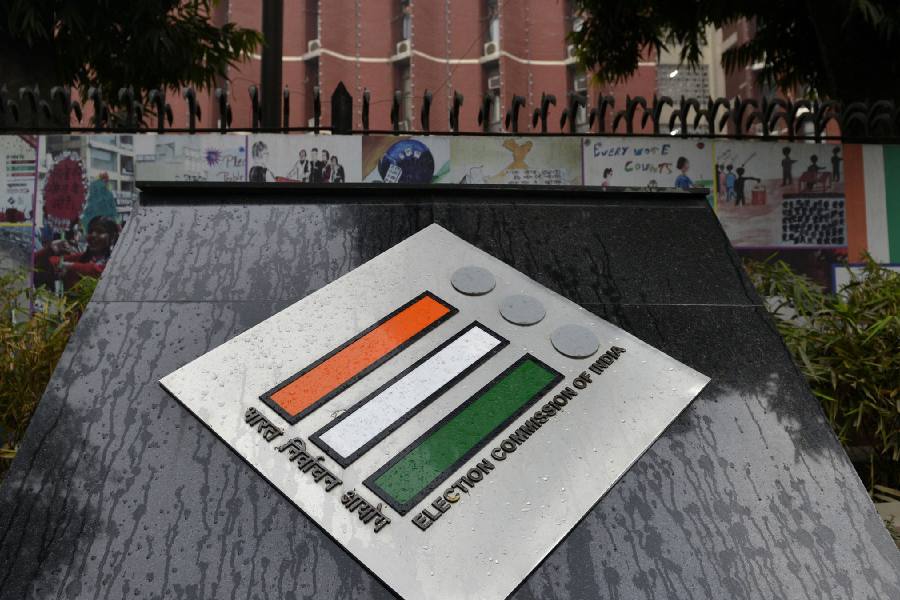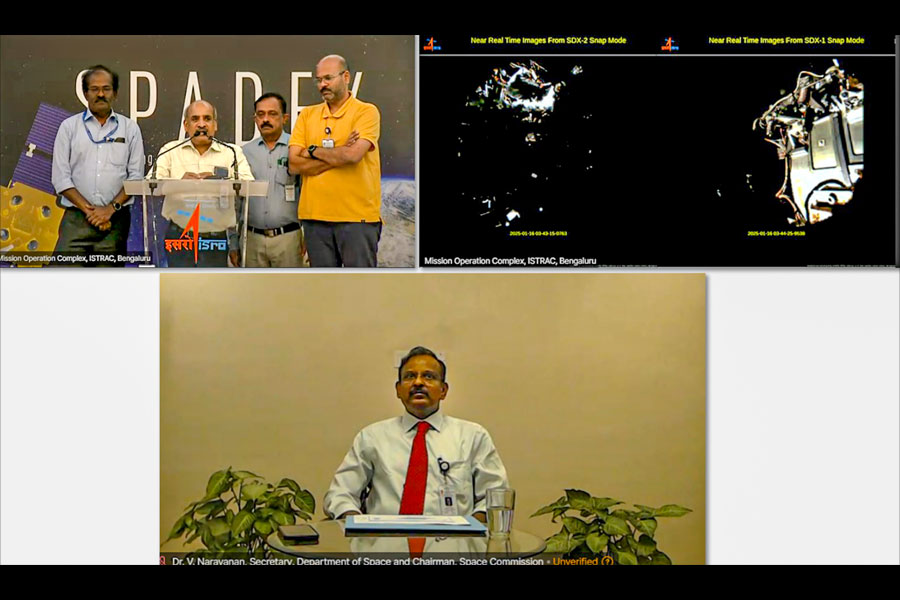Two hundred loudspeakers along a 1.9km route. Over 50 brass bands and 40 “cultural teams” generating loud music from both sides of the road.
Thousands of men and women in colourful clothes, bussed in with their children from neighbouring districts, showering petals.
Prime Minister Narendra Modi’s road show in Ayodhya on Sunday was an assault on the senses, but BJP workers were worried whether the onslaught on the voting machines on May 20 would be as vigorous.
Many among the crowd, waiting since 5pm, looked exhausted and had sat down on the road when Modi’s arrival at 7.45pm on an open truck, chief minister Yogi Adityanath to his right and Faizabad candidate Lallu Singh to his left, galvanised them.
The Prime Minister worshipped at the Ram temple and then traversed Rampath, the road in front of the shrine he had inaugurated during the January 22 consecration.
A BJP politician said the low turnouts in the first two phases “suggested we were losing ground; obviously, our leaders had to invent something to impress the voters”.
A booth-level BJP worker, Rajesh Chauhan, said: “We have brought Modi a fortnight before the vote to remind voters of the country that we built the Ram temple and deserve a third term.”
Arun Pandey, a cold drink seller on Rampath, agreed that the Ram temple was “a great job” but said Modi “should speak less and think more”.
“Yes, it’s difficult because he is getting older, but he should restrain himself from making baseless allegations against others,” he said.
Local participation in the road show seemed negligible. “It’s good that you built the temple but don’t make townspeople’s life hell by sending VIPs every day and holding events,” said Pawan Chaubey, a youth who lives in the lane opposite the Ram temple.
Asked whether the temple had boosted the local economy, he said that “those somehow associated with the temple” — particularly party supporters given contracts for supplies such as ilaichi danas (used as prasad) — had “suddenly become rich”.
“Property dealers from other states have opened offices here and big corporate houses are opening hotels. They appoint local people as peons, waiters and bellhops and not managers or clerks,” Chaubey said.
V.N. Das, a political observer, said the Ram temple issue hadn’t helped the BJP in Faizabad, the Lok Sabha constituency where Ayodhya falls, during every election over the past three decades.
He said the Samajwadi Party with its OBC base and the BSP with its Dalit supporters were “decisive here”.
“The BJP has won here since 2014 but no party can claim Faizabad as its pocket borough,” Das said.
INDIA’s Samajwadi candidate Awadhesh Prasad is a Dalit. “It won’t be easy for Lallu this time,” Das said.
Faizabad, under which Ayodhya falls, votes on May 20

